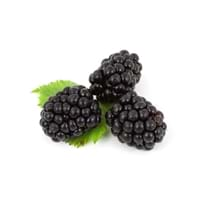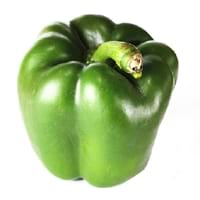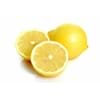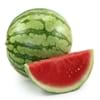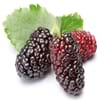Health Benefits
Cancer prevention, Heart care, Increases metabolic rate, Reduces stress, Treatment of dysentary, Treatment of skin Diseases
Arthritis treatment, Cancer prevention, Heart care
General Benefits
Digestive aid, Maintains healthy cholesterol level, Strengthens bones
Anti oxidant properties, Anti-inflammatory properties, Controls blood pressure, Digestive aid, Eye care, Helps in weight loss, Maintains healthy cholesterol level, Strengthens bones
Skin Benefits
Hydrates skin, Skin rejuvenation, Skin revitalization
Anti-aging benefits, Treatment of skin diseases
Hair Benefits
Promotes longer and healthier hair
Prevents hair loss, Promotes longer and healthier hair, Regulates hair growth
Allergy Symptoms
Facial muscle tension, Pressure in sinus, Respiratory congestion, Runny nose, Sneezing, Tingling sensation in wrist and face
Abdominal pains, Coughing, Eczema, Headaches, Hives, Redness of eyes, Sneezing, Swelling, Swelling of mouth, tongue or lips, Watery eyes, Wheezing
Side Effects
Nausea, Vomiting, Might cause change of urine color
Allergic reaction, Mouth irritation, Throat irritation
Best Time to Eat
Best if taken as a breakfast (or empty stomach), As a snack in the late afternoon, Don't consume at night and before bed, Eat the fresh ones, avoid mixing with any other foods, don't eat after meal., Morning time (before lunch)
Along with meal, Don't consume at night and before bed, Don't eat after meal, Morning time (before lunch)
Vitamin B5 (Pantothenic Acid)
Vitamin C (Ascorbic Acid)
Vitamin K (Phyllochinone)
Phytosterol
Not Available
Calories in Fresh Fruit with Peel
Calories in Fresh Fruit without Peel
Not Available
Not Available
Calories in Canned Form
Not Available
Calories in Jam
Not Available
Type
Berry
Fruit vegetable
Season
Spring, Summer
All seasons
Varieties
Prime Ark, Prime Jim, Illini Hardy, Kiowa, Shawnee, Apache, Arapaho, Chester, Hull, Natchez, Navaho and Triple Crown and Von
Big Bertha, Yolo Wonder, Yankee and Fat n Sassy
Color
Purplish black
Green
Inside Color
Magenta
Light Green
Shape
Round
Irregularly oval
Origin
Asia, Europe, North America, South America
Central America, Mexico, South America
Soil Type
Well-drained
Loam
Climatic Conditions
Dry, Warm to hot climate
Warm
Facts about
- There are around 2000 varieties of blackberries throughout the world.
- 80-85 degrees is the ideal temperature for its production.
- Leaves of blackberry tree are used to treat sore throats and mild inflammation of the gums.
- Colored bell peppers are sweeter as compared to green bell pepper.
- The inner white colored cavity is rich source of flavonoids and is edible.
- Red bell peppers have more nutrients as compared to green bell peppers.
Top Producer
United States of America
China
Other Countries
China, New Zealand, Serbia, South Africa
Egypt, Indonesia, Israel, Korea, Mexico, Netherlands, Nigeria, Romania, Spain, Turkey
Top Importer
United States of America
United States of America
Top Exporter
Mexico
Canada
Botanical Name
Rubus Fruticosus
Capsicum annuum
Synonym
Rubus Millspaughii or Rubus Laciniatus
Not Available
Subkingdom
Tracheobionta
Tracheobionta
Division
Magnoliophyta
Magnoliophyta
Class
Magnoliopsida
Magnoliopsida
Subclass
Rosidae
Alismidae
Family
Rosaceae
Solanaceae
Species
Rubus fruticosus
C. annum
Generic Group
Rose
Not Available
Compare Blackberry and Green Bell Pepper
It is important compare Blackberry and Green Bell Pepper as both the fruits have a different nutritional value. Their comparison can be done on the basis of their vitamin and mineral content, calories, benefits as well as characteristics, making it easier for us to choose the best fruit for our diet. Their general health benefits are as follows:
Blackberry Benefits: digestive aid, maintains healthy cholesterol level and strengthens bones.
Green Bell Pepper Benefits: anti oxidant properties, anti-inflammatory properties, controls blood pressure, digestive aid, eye care, helps in weight loss, maintains healthy cholesterol level and strengthens bones.
Fruits are also used as a remedy for various hair problems. The hair benefits of Blackberry are: promotes longer and healthier hair and hair benefits of Green Bell Pepper are: prevents hair loss, promotes longer and healthier hair and regulates hair growth. Some fruits are known to cause allergic reactions. The allergy symptoms of first fruit are: facial muscle tension, pressure in sinus, respiratory congestion, runny nose, sneezing and tingling sensation in wrist and face and the symptoms of second fruit are: abdominal pains, coughing, eczema, headaches, hives, redness of eyes, sneezing, swelling, swelling of mouth, tongue or lips, watery eyes and wheezing. Get sorted Blackberry vs Green Bell Pepper comparison with the help of fruit comparison tool by fruitvs.com.
